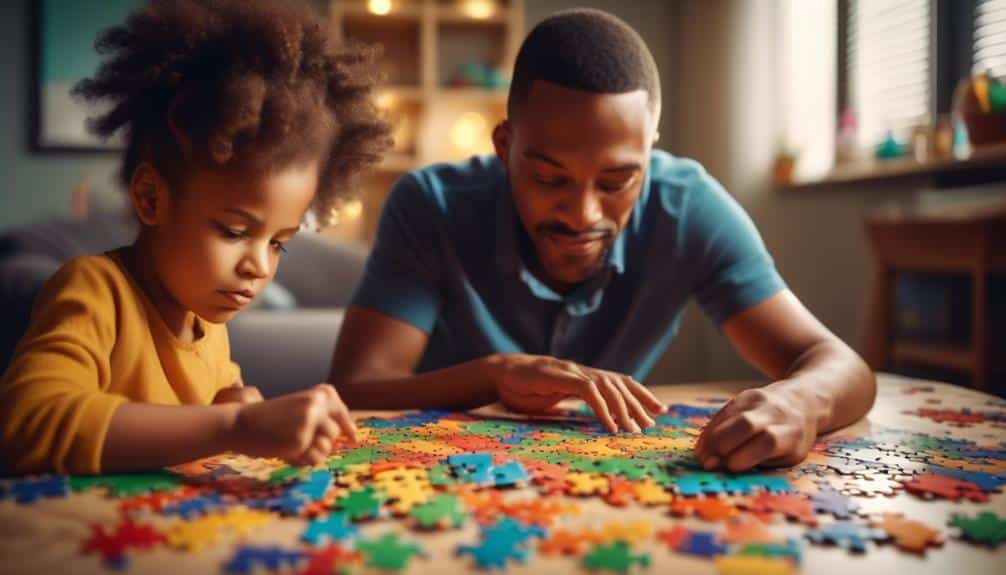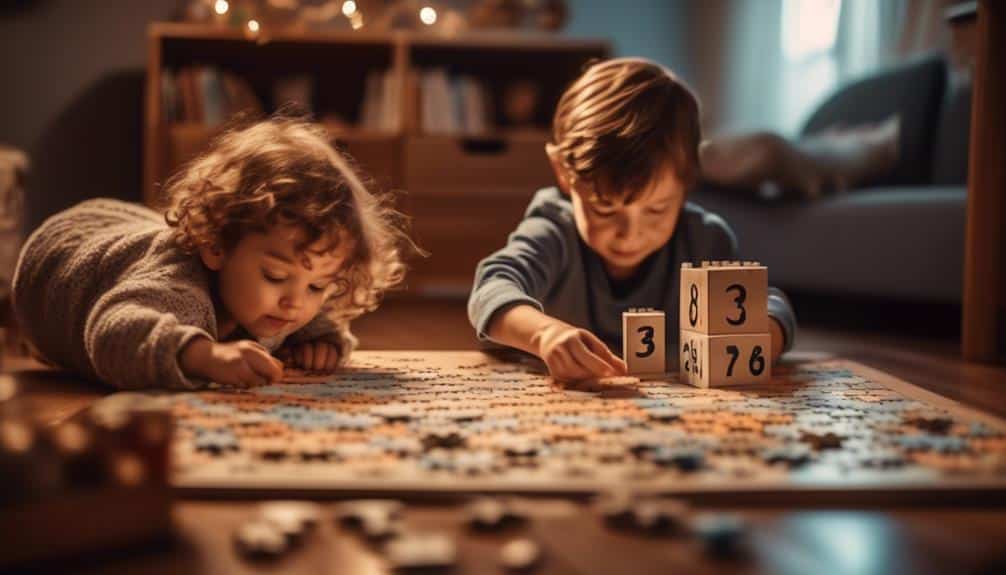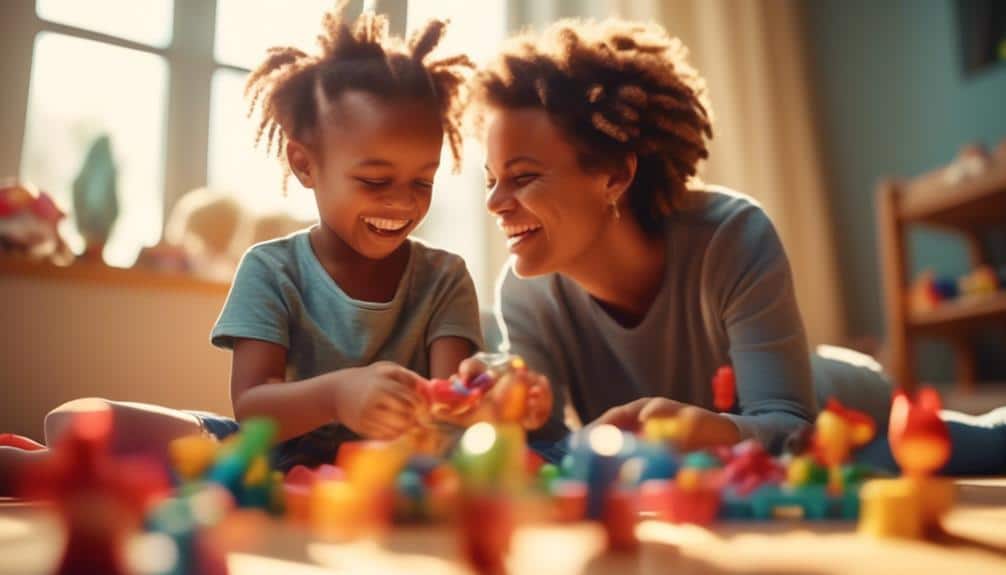In child development, the potency of play as a cornerstone for social skill acquisition is increasingly recognized. The Boost Social Skills Through DIRFloortime Parent-Child Play model offers a nuanced framework that acknowledges the complexity of individual developmental trajectories while fostering critical interpersonal skills.
Grounded in the Developmental, Individual-difference, Relationship-based (DIR) approach, this model posits that parents can significantly enhance their child’s capacity for emotional regulation, social connection, and communicative competence through responsive and attuned play interactions. What remains less explored, however, is the intricate dance between parent and child that unfolds within these play sessions—the subtle cues, the shared moments of discovery, and the gentle guidance that pave the way for a child’s social blossoming.
As we examine the transformative potential of DIR Parent-Child Play, we uncover the layers of interplay where the seeds of social adeptness are sown, inviting further contemplation on the art and science of nurturing social skills in the fertile ground of parent-child interaction.
Key Takeaways
- Joint attention nurtures emotional bonds and cognitive growth.
- Emotional sharing enhances emotional intelligence and interpersonal skills.
- Problem-solving through play enriches cognitive abilities and equips children with essential life skills.
- Varied play scenarios exercise creativity and deepen social understanding.
Embracing DIR Model Principles
Understanding and applying the Developmental, Individual-differences, Relationship-based (DIR) model principles can significantly enhance a child’s capacity to develop social skills through meaningful, interactive play tailored to their needs and developmental level. Embracing these principles involves recognizing the unique ways each child perceives and interacts with the world around them. By fostering an environment that encourages children to engage in activities that resonate with their interests, parents and caregivers can create teachable moments that are both enjoyable and educational.
When parents thoughtfully participate in play, they help build a foundation for better communication and language development. This attentive engagement also fortifies the bond with the child, as it demonstrates a commitment to understanding their world. Utilizing the DIRFloortime model, one can become a supportive coach, offering encouragement and positive reinforcement sensitive to the child’s developmental milestones. This empathetic approach is paramount when aiding children who may find social interaction challenging. Caregivers can gently guide children toward more complex social interactions by providing structured activities and necessary support. In doing so, they lay the groundwork for children to form meaningful connections with others, using play as a catalyst for social and emotional growth.
Setting the Stage for Interaction
To optimize the conditions for interactive play that fosters social skill development, selecting an environment that minimizes distractions and maximizes comfort thoughtfully is crucial. The choice of toys and activities should be age-appropriate and designed to encourage cooperative engagement, prompting verbal and non-verbal communication. Establishing a tailored and inviting space is pivotal in nurturing the groundwork for meaningful interaction between parent and child.
Choosing Appropriate Play Spaces
Selecting a play area that minimizes distractions and noise is essential for fostering focused interaction and effective language development in children. When choosing appropriate play spaces, it is vital to ensure that the environment is safe and encourages physical movement and exploration, which are core to the development of social skills in a child. The play space should have various toys and activities that capture a child’s interest and promote creativity and social interaction. Natural lighting and comfortable seating can create a calming and inviting atmosphere conducive to play. Moreover, providing open-ended toys within this space supports imaginative play and problem-solving, further enhancing a child’s ability to engage and connect with others during play.
Selecting Interactive Toys/Activities
Interactive toys and activities are pivotal in creating a foundation for children to develop vital communication and social skills through play. When selecting interactive toys/activities, choosing those that entertain and engage your child in meaningful interactions is essential. These toys should encourage your child to explore the nuances of communication, cooperation, and empathy.
| Feature of Toy/Activity | Benefit for Child | Skill Developed |
|---|---|---|
| Open-ended Play | Fosters Creativity | Communication |
| Turn-taking | Encourages Sharing | Social Skills |
| Cooperative Requirement | Promotes Teamwork | Relationship Building |
Choosing wisely means finding toys that naturally incorporate taking turns and sharing, enhancing your child’s ability to connect with others in a playful yet profound way.
Reading Nonverbal Cues

As we progress in our exploration of the DIR parent-child play approach, we turn our attention to the nuanced realm of nonverbal communication. The ability to accurately interpret facial expressions and understand body language forms a cornerstone in developing a child’s social skills, as it provides a window into unspoken thoughts and feelings. Fostering this skill set through attentive and responsive parent-child interactions can significantly enhance a child’s empathetic abilities and improve their capacity for meaningful social engagement.
Interpreting Facial Expressions
Recognizing the subtle nuances of facial expressions is critical in fostering effective social interactions and emotional understanding. As children learn to interpret these nonverbal cues, they develop empathy and become more adept at responding to the needs and feelings of others. To help children master this vital skill:
- Engage them in identifying facial expressions using pictures or videos, reinforcing their recognition abilities.
- Use role-playing games to simulate social situations, encouraging children to practice and understand various emotional expressions.
- Foster a habit of asking questions about how certain expressions might affect one’s feelings, nurturing an environment of emotional intelligence and mindfulness.
Understanding Body Language
Body language, encompassing a range of nonverbal signals from facial expressions to posture, plays a crucial role in conveying emotions and intentions in social interactions. As children develop, their ability to interpret these cues is essential for forming and maintaining social relationships. To help your child recognize and understand body language, engage in play that involves reading nonverbal signals.
| Signal Type | What to Notice | Potential Meaning |
|---|---|---|
| Facial Expressions | Smiles, frowns, eye squinting | Happiness, sadness, confusion |
| Posture and Movement | Crossed arms, leaning in | Defensiveness, interest |
| Eye Contact | Consistent vs. shifting gaze | Confidence, nervousness |
| Hand Gestures | Open palms, clenched fists | Openness, anger, or frustration |
Guide your child to be mindful of these cues during interactions, enhancing their empathy and ability to connect with others.
Mastering Joint Attention

Joint attention, integral to early childhood development, is a cornerstone for building social interaction and language skills. It involves a harmonious engagement where a child and caregiver focus their undivided attention on the same point of interest. This shared focus creates a foundational platform for children to learn how to interact with others and develop critical communication abilities.
To evoke emotion in the audience:
- Imagine the heartwarming scene of a parent and child, eyes locked together, sharing a moment of mutual discovery.
- Consider a child’s sense of achievement when gestures and vocalizations successfully direct a caregiver’s attention.
- Visualize the tender closeness fostered during reading together, where shared stories become gateways to new realms of understanding and connection.
Mastering joint attention is a developmental milestone and a deeply relational process that nurtures emotional bonds and cognitive growth. By consciously practicing activities that promote this skill, such as pointing out intriguing sights during a walk or engaging in joint play with a favorite toy, parents and caregivers can significantly contribute to a child’s ability to learn and thrive in social environments.
Encouraging Emotional Sharing

Building on the foundation of joint attention, fostering an environment that encourages children to openly express their emotions during play, enhancing their emotional intelligence and interpersonal skills is crucial. This nurturing atmosphere develops a child’s ability to identify, label, and communicate feelings, laying the groundwork for emotional sharing. By modeling empathetic behavior and teaching children to articulate their emotions, caregivers play a pivotal role in fostering emotional awareness and understanding.
To further promote emotional expression, it is beneficial to ask open-ended questions, inviting children to share their thoughts and experiences. This practice encourages children to explore their emotional landscape and strengthens their communication skills. Maintaining solid and supportive responses to a child’s expressed feelings validates their experiences and reinforces the importance of sharing emotions.
Incorporating storytelling and imaginative play elements can be powerful tools in nurturing a child’s capacity for emotional sharing. These activities provide a rich context for children to engage with various emotions, allowing for a deeper exploration of their emotional responses in a secure and creative environment.
Fostering Problem-Solving Skills

Inspiring problem-solving and critical thinking through play enriches a child’s cognitive abilities and equips them with essential life skills for navigating complex social situations. Problem-solving skills are foundational to a child’s development and vital across all ages. By engaging in open-ended play activities, parents can create a supportive environment where children feel safe to explore multiple solutions and learn from the outcomes.
To effectively promote problem-solving skills within the context of DIR parent-child play:
- Please encourage your child to solve problems and make decisions independently, offering guidance only when necessary to ensure they feel empowered and confident.
- Discuss potential outcomes of different solutions with your child, helping them to understand the consequences of their choices and fostering a deeper level of critical thinking.
- To reinforce the importance of perseverance and adaptability, provide constructive feedback during play, focusing on the thinking process rather than just the result.
When parents incorporate these strategies, they lay the groundwork for things their children will carry into their adult lives. Emphasizing problem-solving during play teaches children to face challenges with resilience, turning each obstacle into an opportunity for growth and learning.
Expanding Play Scenarios

Expanding upon the foundation of problem-solving skills fostered through play, introducing varied play scenarios allows children to exercise creativity and deepen their social understanding. In child development, nurturing a child’s ability to adapt to diverse social roles and environments is critical. Take a look at how new props or toys can transform a simple game together into an intricate story where children navigate complex emotional landscapes and perspectives.
By expanding play scenarios to include a variety of characters and settings, children learn to appreciate differences and similarities between themselves and others. This enriches their empathy and social cognition. When parents or caretakers engage in these play activities, they bond with their children and model how to interact with others respectfully and understandingly.
Furthermore, cooperative play scenarios with peers provide a practical framework for children to practice the give-and-take of social interactions. Such experiences are foundational in helping children forge strong interpersonal skills. Open-ended play scenarios serve as a canvas for children to use their imagination, allowing them to become architects of their social narratives. These dynamic play experiences are pivotal in equipping children with the resilience and adaptability needed for real-world socialization.
Building Communication Strategies

Effective communication strategies are pivotal in nurturing a child’s ability to express themselves and understand others, setting the stage for meaningful social interactions. To increase your child’s social and linguistic capabilities, parents and caregivers can employ various techniques that enhance language development and deepen emotional connections.
Engaging your child in conversations beyond the surface can drastically improve their expressive and receptive language skills. Discussing the events and characters in books provides a platform for your child to practice and understand complex language structures and emotions. Books are an excellent resource for initiating such discussions, allowing children to relate to different situations and characters.
Family members play a crucial role in modeling effective communication. Simple activities like sharing stories around the dinner table can significantly enrich a child’s vocabulary and comprehension, turning everyday moments into learning opportunities.
To evoke emotion in the audience, consider the following:
- *Imagine the joy in a child’s eyes when they successfully articulate their thoughts and feelings.*
- *Feel the warmth that envelops the dinner table as family members bond over shared stories.*
- *Envision the sense of accomplishment your child experiences when they master new words and use them confidently.*
These strategies create an environment where children feel heard and valued, fostering their ability to connect with others empathetically.
Reinforcing Daily Play Routines

Establishing consistent play routines offers a foundation of security for children, paving the way for enhanced social skills through clear expectations and structured interactions. When a little one knows what to expect throughout the day, they are more likely to engage positively, reducing the likelihood of inappropriate behavior. These routines provide plenty of opportunities for language development, as incorporating storytelling or singing helps to expand their vocabulary and communication skills.
Specific praise during these interactions boosts the child’s self-esteem and reinforces positive social behaviors. Recognizing moments of sharing, patience, and kindness with genuine commendation encourages children to repeat these pro-social skills.
Additionally, play routines that include cooperative activities with peers teach the valuable lessons of teamwork and collaboration. These interactions are crucial for learning how to navigate social dynamics. When parents or caregivers guide children through problem-solving and conflict resolution, they effectively equip them with tools to handle social challenges.
Frequently Asked Questions
How Social Skills Can Be Developed Through DIRFloortime Parent-Child Play?
Play facilitates the development of children’s social skills by enabling interaction, communication practice, and role-playing. These skills are essential for understanding social dynamics and enhancing empathetic responses in real-world situations.
How Can Parents Help Children Develop Social Skills?
Parents can foster their children’s social skills by actively engaging in interactive play, modeling positive interactions, and praising appropriate social behavior, thus creating a nurturing environment for developmental growth.
How Do You Fix Lack of Social Skills?
Addressing a lack of social skills requires a multifaceted approach, including behavioral therapy, social skills training groups, and real-world practice, complemented by supportive environments that encourage positive interactions and model effective communication strategies.
What Kind of Play Promotes Social Development?
Interactive, imaginative, and cooperative play significantly advances social development by fostering communication, shared experiences, and emotional understanding, which is essential for individuals dedicated to nurturing and guiding others toward enriched social interactions.
Conclusion
The DIR Parent-Child Play approach is an effective intervention model developed by Stanley Greenspan, a pioneer in child development. It is a developmental approach that uses play-based interactions to foster emotional and developmental skills in children with autism spectrum disorders. This approach differs from traditional therapies, focusing on creating meaningful connections between parents and children through emotional interactions. DIR is a relationship-based model that bridges the gap between ideas and creates a supportive environment for children to develop their core skills.
Studies have shown that DIR therapy techniques are a practical approach to therapy for children with developmental disorders. It helps children to develop their cognitive, communication, social, and motor skills. Occupational and speech therapists, as well as parents of children with autism spectrum, use DIR to support children’s daily living skills, sensory processing skills, emotional regulation skills, and engagement skills.
DIR’s Parent-Child Play approach has been subject to pilot studies, cross-sectional studies, and systematic reviews. It has been proven to be an evidence-based strategy for improving the quality of life of children with autism spectrum disorders. The approach is child-led, and the therapist follows the child’s lead to create meaningful interactions. The therapist uses creative arts therapies, play-based activities, and sensory integration techniques to facilitate reciprocal interactions between the child and the therapist.
In conclusion, DIR therapy is a practical approach to therapy for children with autism spectrum disorders. It is a developmentally oriented approach that focuses on creating emotional connections between the child and therapist. DIR therapy uses play-based interactions to facilitate developmental progress, and it is an evidence-based strategy for improving the outcomes for children with autism spectrum disorders.


Recent Comments